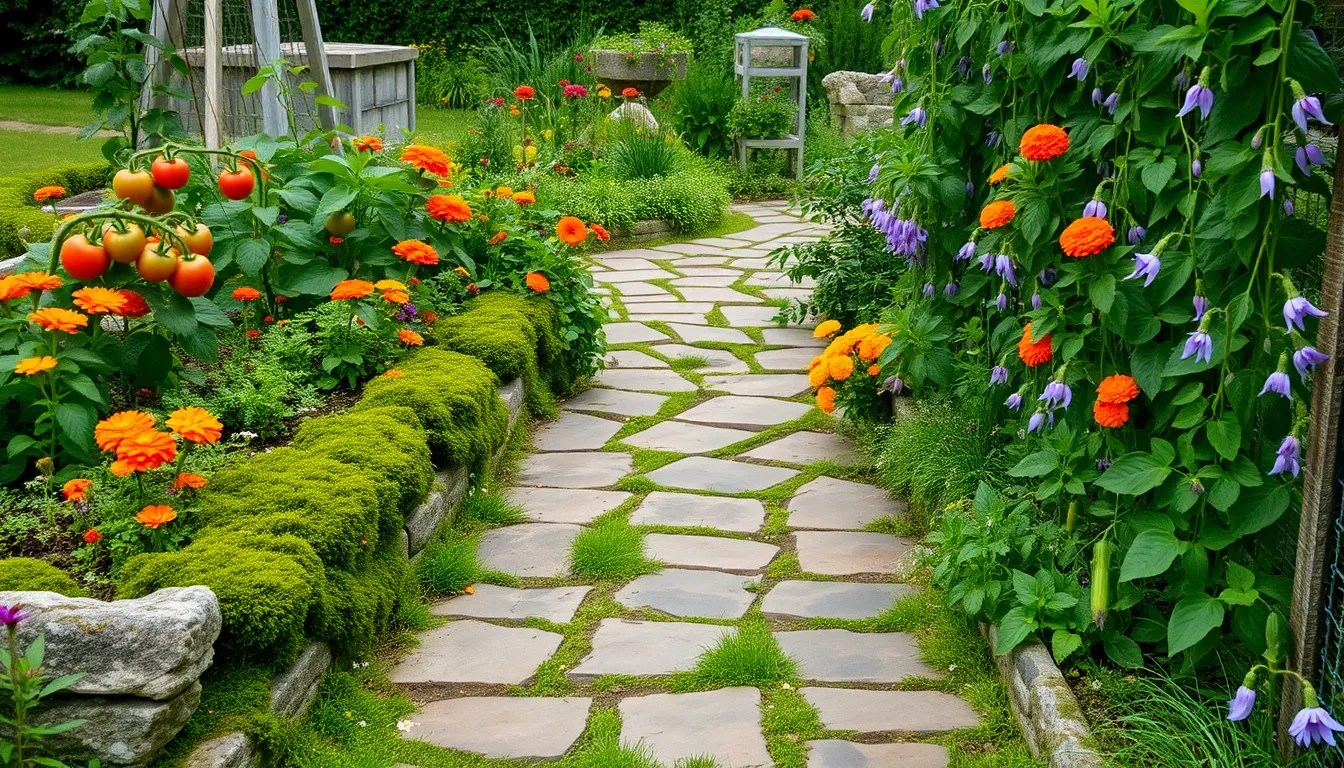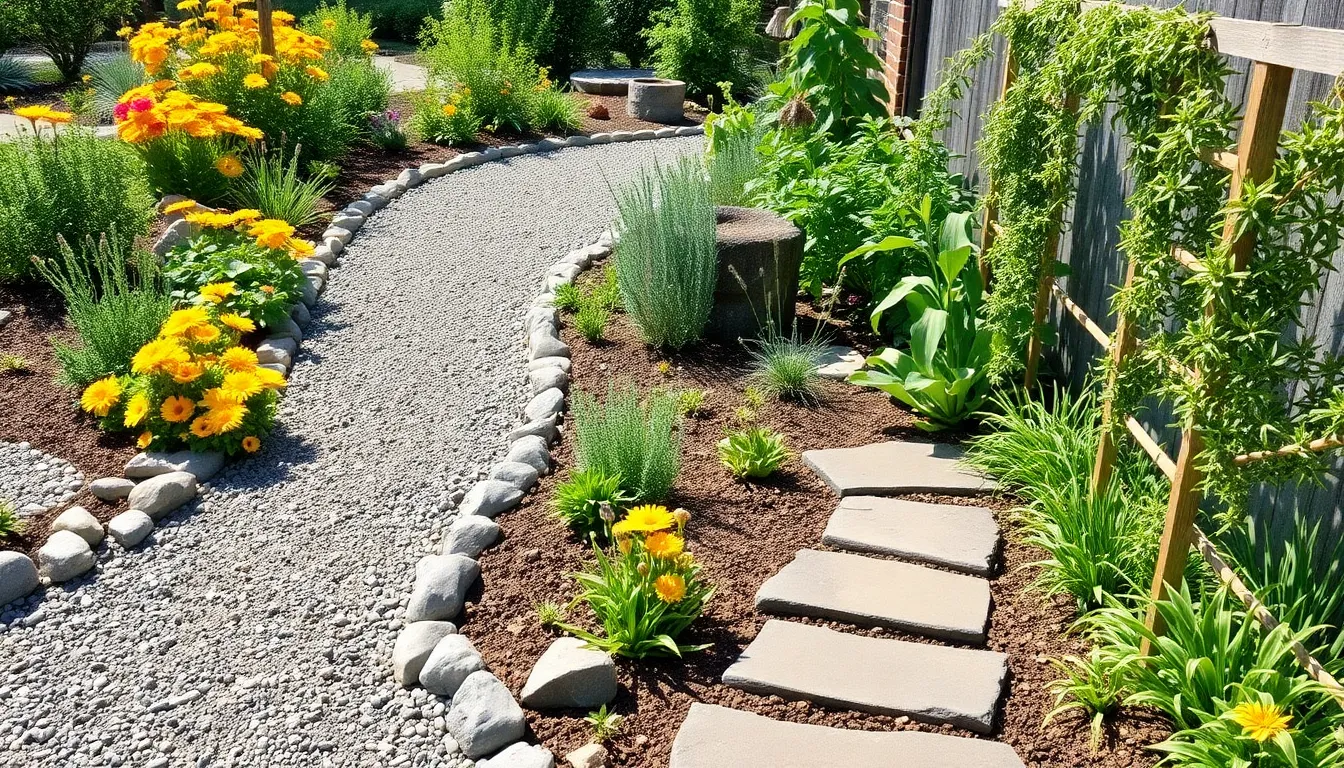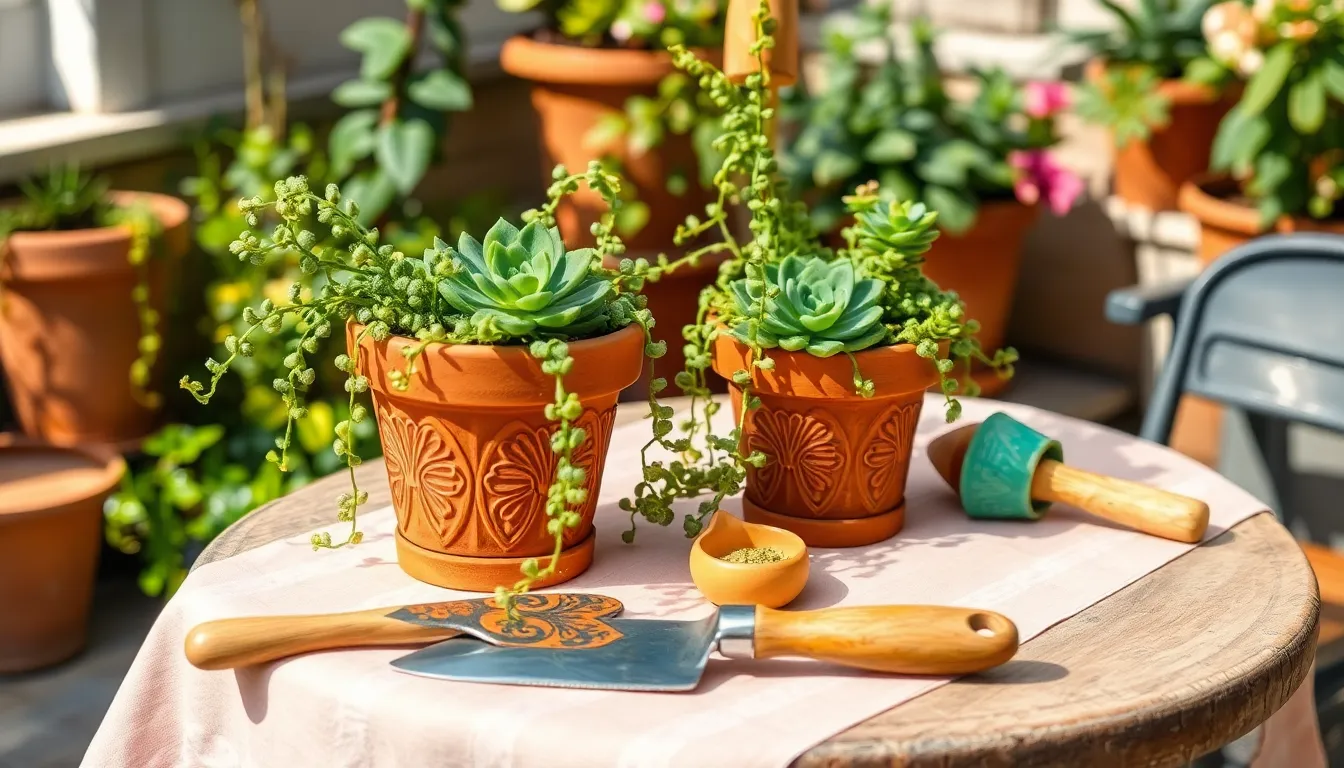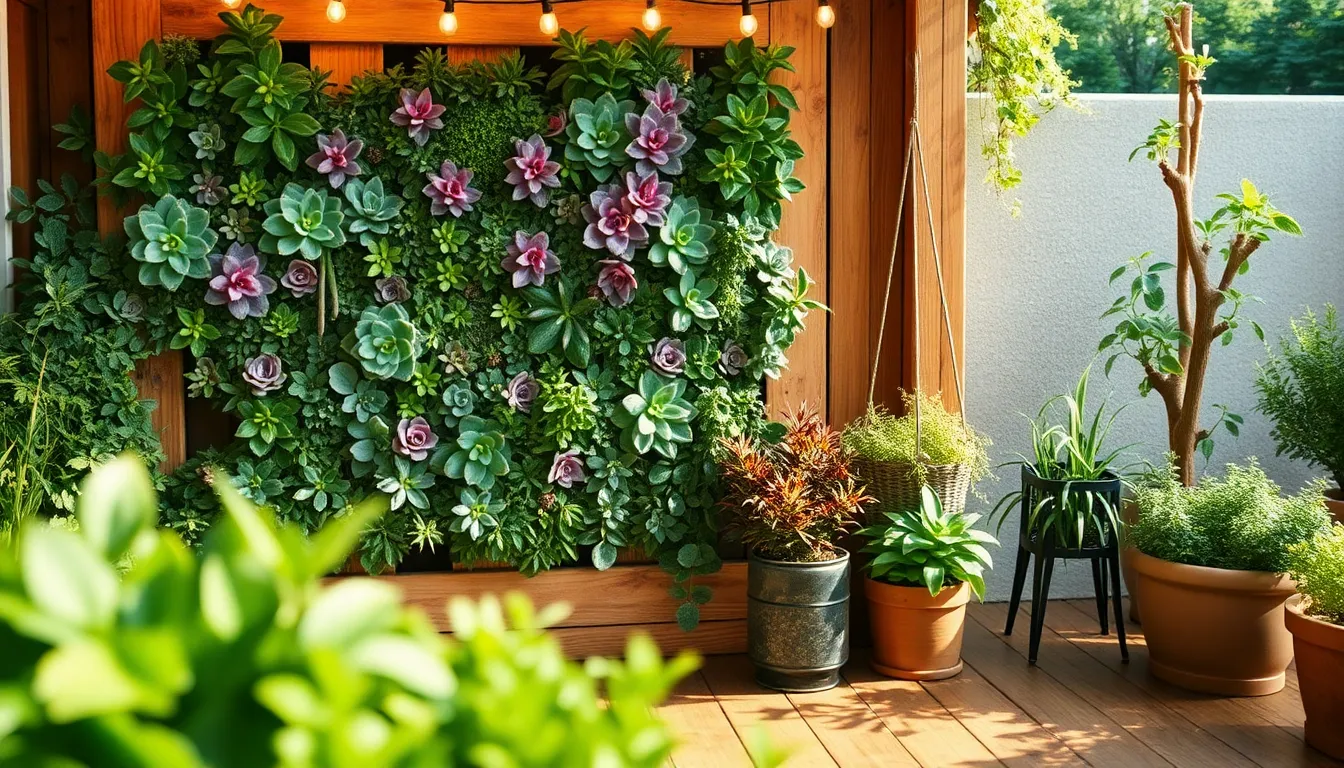A garden pathway is much more than a simple means of getting from point A to point B; it is an invitation to explore and a canvas to express your creativity. Whether you’re just sowing the seeds of your gardening journey or have been nurturing nature’s bounty for years, designing an effective garden path can transform your outdoor space into a harmonious blend of function and beauty.
In this article, we delve into ten productive garden pathway designs that promise to inspire and guide you in crafting your own verdant trails. You’ll discover how to balance aesthetics with practicality, ensuring that your pathways not only enhance the visual appeal of your garden but also support its health and accessibility. By the end, you’ll have a treasure trove of ideas and tips to create pathways that invite discovery and delight every step of the way.
Understanding Pathway Functionality
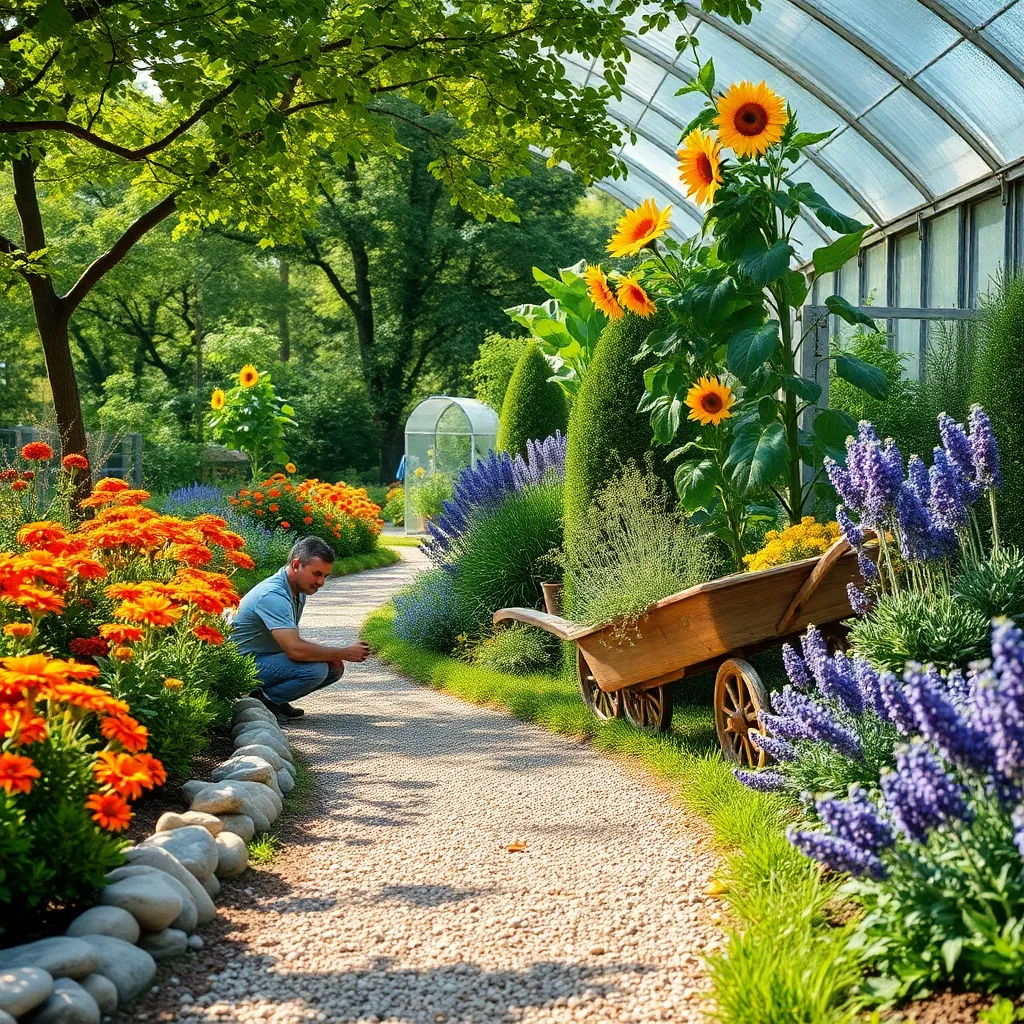
Understanding the functionality of garden pathways is crucial for creating a productive and efficient garden space. Pathways not only provide essential access to different areas of the garden but also help in organizing and separating various plant zones.
To design functional pathways, consider the materials that best suit your garden’s climate and aesthetic. Gravel and wood chips are excellent for DIY projects, offering good drainage and a natural look, while stone or brick pathways provide durability and a more formal appearance.
Ensure pathways are wide enough to accommodate garden carts and wheelbarrows, typically at least 3 feet wide. This width enables easy transportation of tools and harvests, making routine garden tasks more efficient and less labor-intensive.
For added functionality, consider incorporating stepping stones or pavers that allow rainwater to permeate, reducing runoff and erosion. These features not only improve the pathway’s practicality but also contribute to the garden’s overall health by supporting better water management.
Choosing Durable Pathway Materials
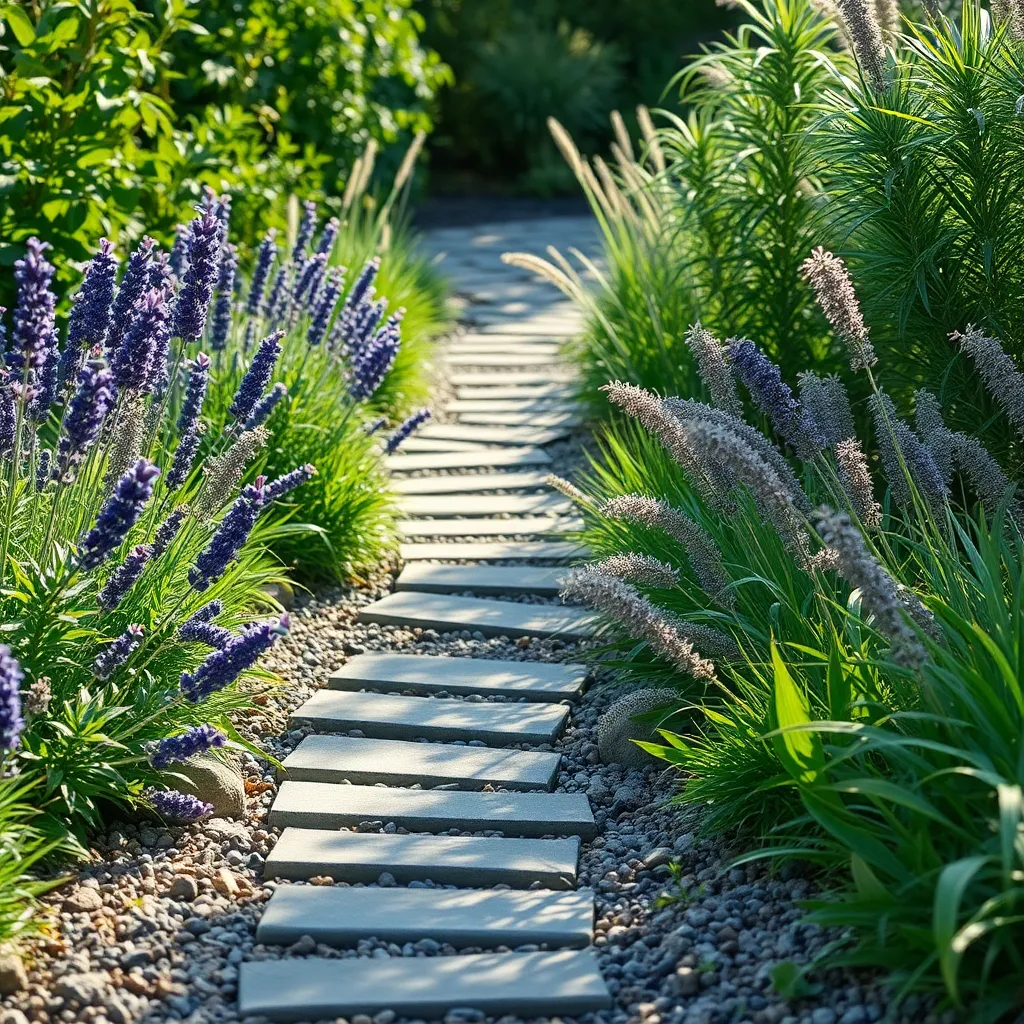
When selecting materials for your garden pathways, durability is a crucial consideration. Concrete and brick are excellent choices due to their longevity and ability to withstand various weather conditions. Both materials are low maintenance, making them ideal for busy gardeners looking to reduce upkeep. However, ensure that your soil drainage is adequate, as poor drainage can cause these materials to crack over time.
Another option worth considering is natural stone, which offers both durability and aesthetic appeal. Flagstone and slate are popular choices, providing a rustic charm that blends seamlessly with garden landscapes. To maintain these pathways, occasional cleaning and sealing are recommended to protect them from the elements. Additionally, installing a sand or gravel base beneath the stones can enhance stability and prevent shifting.
For those who prefer a more eco-friendly approach, recycled materials like crushed gravel or rubber pavers are viable alternatives. These materials not only minimize environmental impact but also offer excellent drainage capabilities, which help prevent waterlogging in your garden. While they might require more frequent leveling compared to traditional options, their sustainable nature makes them a worthwhile investment. Regularly check for uneven spots and adjust as needed to maintain a safe and attractive pathway.
Consider the specific needs of your garden when choosing pathway materials. If your garden is subject to heavy foot traffic, more robust materials like concrete or natural stone might be necessary. Conversely, in lighter-use areas, gravel or mulch can provide an equally effective yet softer pathway solution. Whatever your choice, ensure that the installation is done correctly, as this will maximize the lifespan and functionality of your garden pathways.
Incorporating Natural Stone Designs
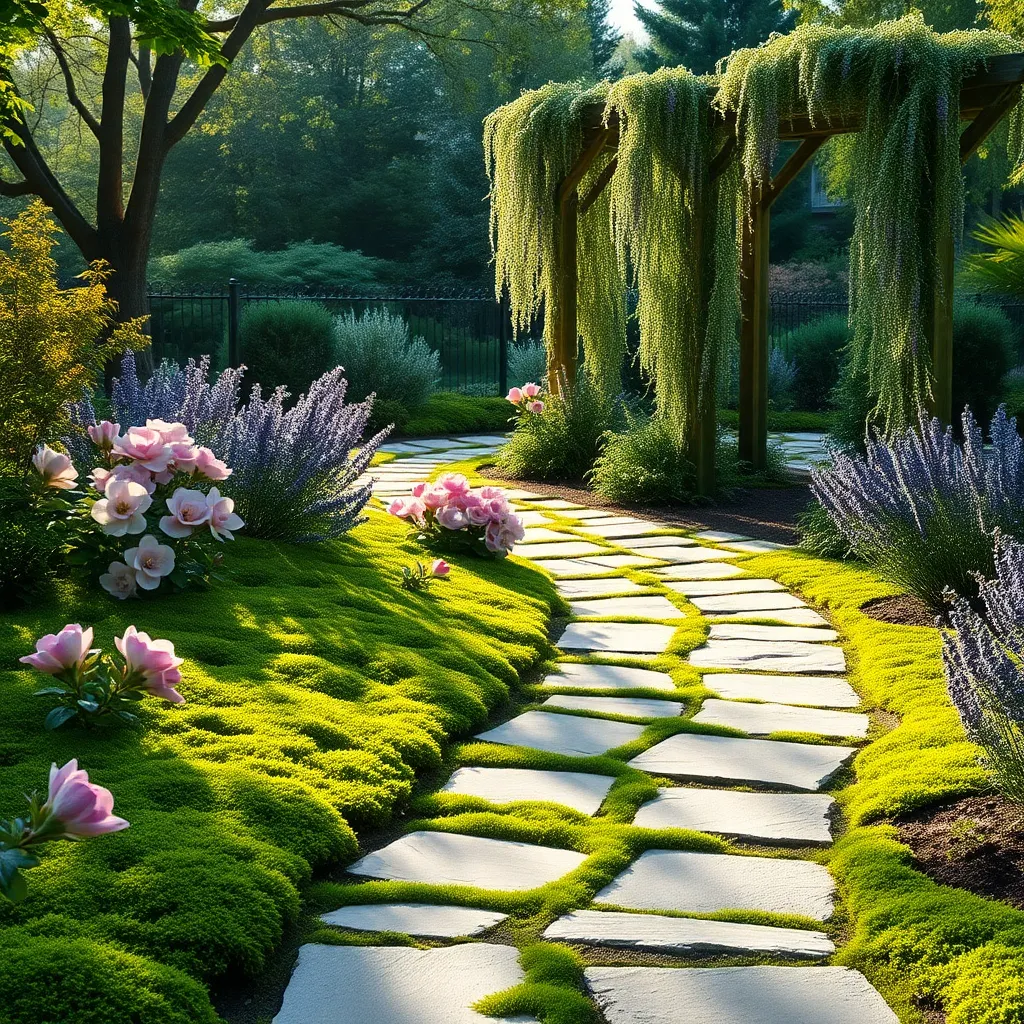
Natural stone is an excellent choice for garden pathways, adding both beauty and durability to your outdoor space. Consider using locally sourced stone to reduce environmental impact and ensure the material suits your regional climate conditions.
Begin by choosing the right type of stone for your pathway, such as flagstone for a flat, walkable surface. Ensure the stones are laid on a well-prepared base of compacted gravel and sand to prevent shifting and promote drainage.
Spacing the stones correctly is crucial for a successful natural stone pathway. Aim for gaps of around 1 to 2 inches to allow for grass or ground cover plants to grow between the stones, adding a touch of greenery to your path.
For those looking to add a bit more flair, incorporate a mix of stone sizes and colors for visual interest. Use smaller stones or gravel to fill in gaps and create a cohesive look, while also improving stability underfoot.
Ensure your stone pathway is practical by keeping maintenance in mind. Regularly remove weeds and top up the gravel or sand in between stones to maintain the pathway’s integrity and appearance over time.
Creative Brick Pathway Options
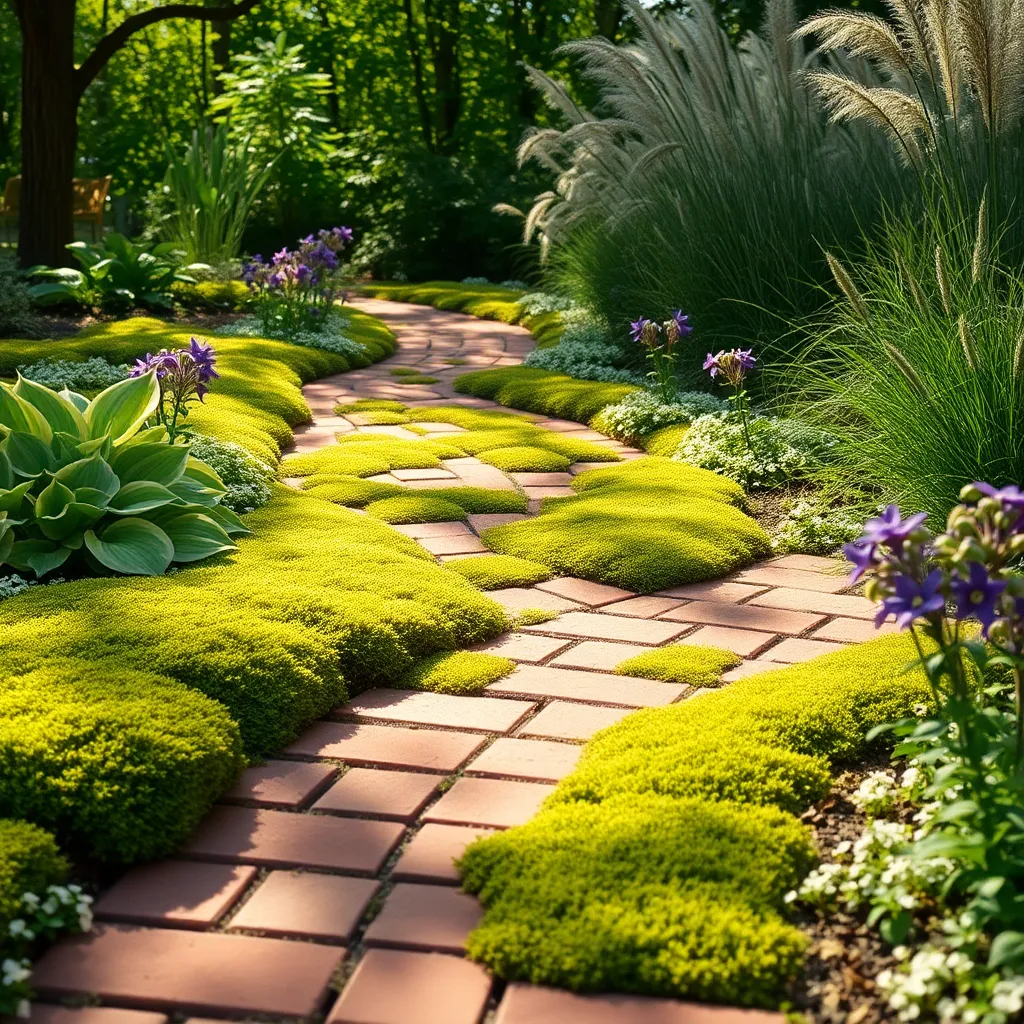
Transforming your garden with a brick pathway can add both charm and functionality. Start by selecting durable bricks that complement your garden’s aesthetic, ensuring they can withstand the local climate.
Planning the layout is crucial for a successful installation. Consider a simple straight path for a formal garden or a winding design to add a whimsical touch to informal settings.
Before laying bricks, prepare the ground by removing grass and leveling the soil. It’s essential to compact the base with gravel and sand to prevent shifting and ensure longevity.
For advanced gardeners, consider incorporating moss or creeping thyme between the bricks to add color and texture. These plants are hardy and thrive in partial to full sun, requiring minimal maintenance once established.
Sustainable Gravel Pathway Ideas
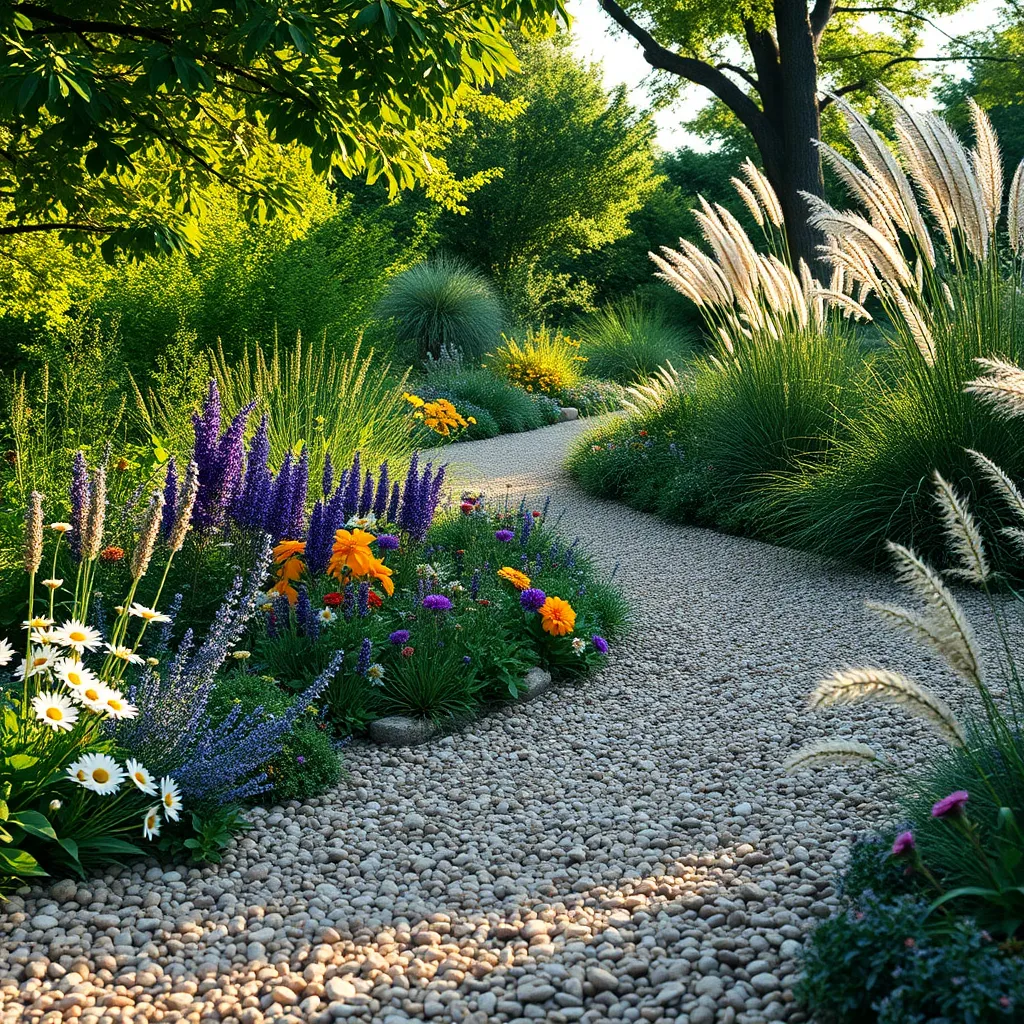
Gravel pathways offer a sustainable and aesthetically pleasing option for any garden, blending seamlessly with natural landscapes. Begin by selecting locally sourced gravel to minimize environmental impact and ensure it complements your garden’s overall design.
When installing a gravel pathway, lay down a base layer of crushed stone to improve drainage and stability. This base layer should be about 4 inches deep, followed by a 2-inch top layer of finer gravel for a smooth finish.
For beginners, an easy way to maintain your gravel pathway is to regularly rake it to redistribute the gravel evenly. This not only enhances its appearance but also prevents weeds from taking root, reducing the need for chemical herbicides.
Advanced gardeners may consider incorporating edging materials like bricks or timber to keep the gravel contained and prevent it from spilling into adjacent garden beds. Additionally, using a permeable landscape fabric beneath the gravel can further deter weed growth while allowing water to seep through, nourishing nearby plants.
Modern Concrete Pathway Solutions
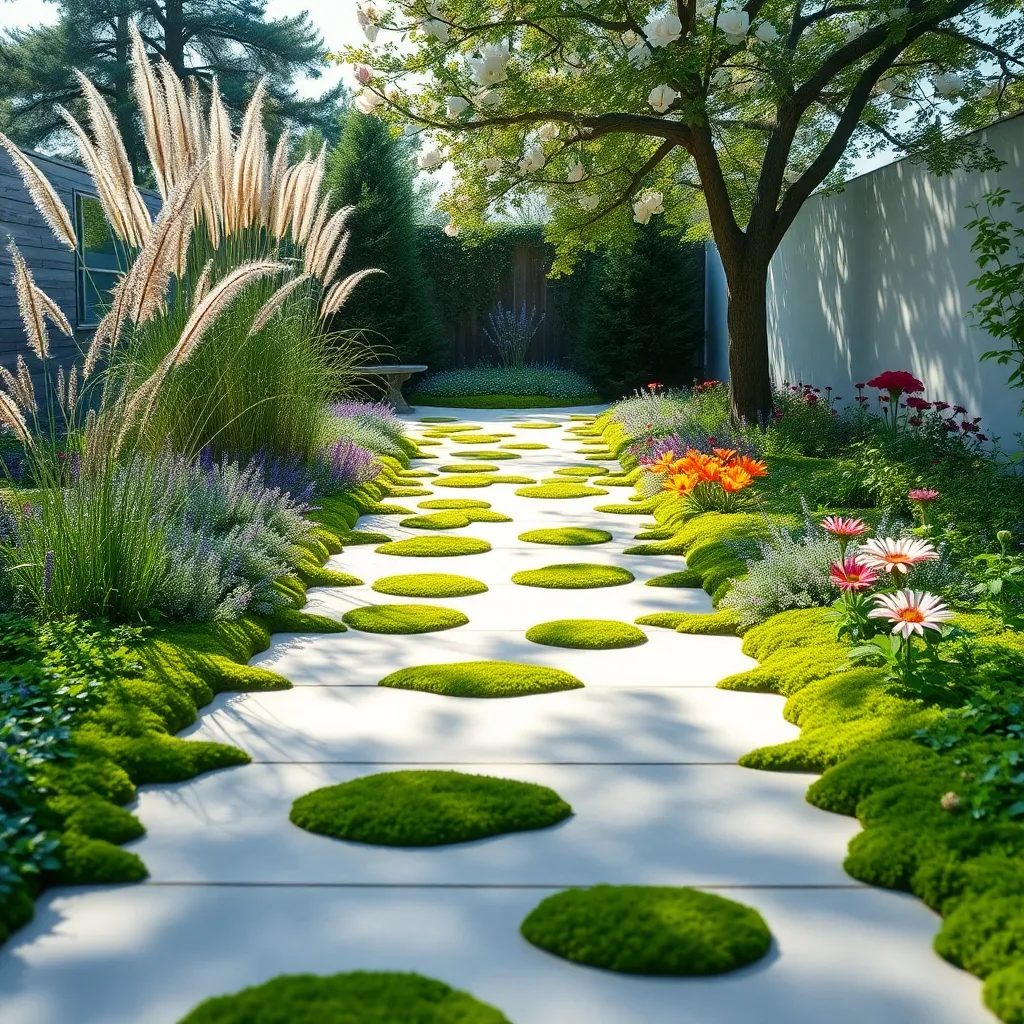
Modern concrete pathways offer a sleek and durable option for garden paths, combining functionality with aesthetic appeal. Concrete is versatile and can be customized with various finishes and colors to complement your garden’s design.
To create a modern concrete pathway, start by planning the path’s layout to guide traffic efficiently through your garden. Consider using large concrete slabs for a minimalist look, which also makes maintenance easy.
For installation, ensure the ground is level and free from debris before pouring the concrete. A base layer of compacted gravel will improve durability and prevent cracking over time.
Enhance your concrete pathway by embedding small stones or tiles to add texture and visual interest. Sealing the concrete is essential to protect it from weather elements and maintain its appearance for years to come.
Elegant Wooden Pathway Styles
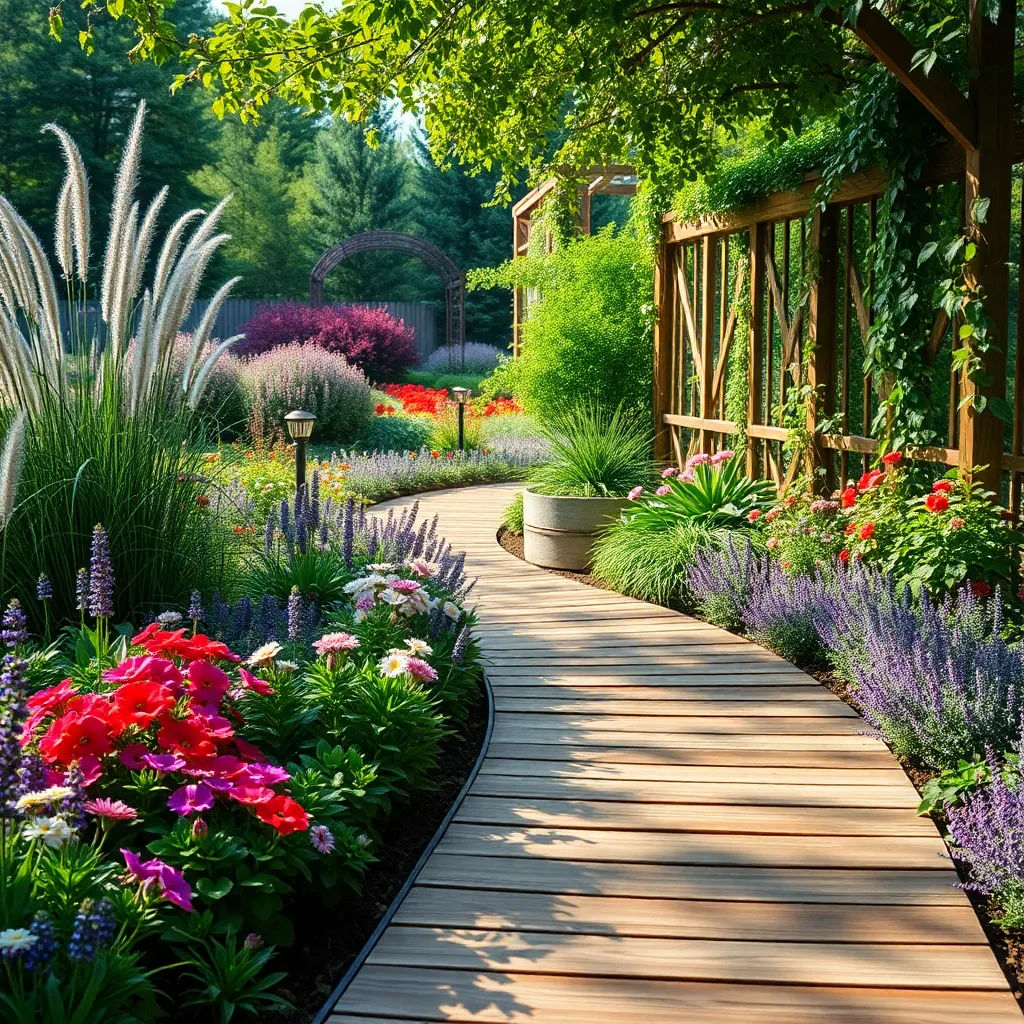
Wooden pathways bring a touch of elegance and warmth to any garden setting, seamlessly blending with natural surroundings. These pathways can be crafted from a variety of woods, such as cedar or teak, which are both durable and resistant to rot, making them ideal for outdoor use.
For a basic wooden pathway, you can use simple planks laid over a gravel base to improve drainage and prevent water accumulation. Ensure the wood is treated with a weather-resistant sealant to prolong its lifespan and maintain its aesthetic appeal.
Incorporating curves into your wooden pathway can add a dynamic visual element, guiding visitors through your garden’s lush landscapes. To create these curves, use flexible edging materials and secure the wooden planks with galvanized screws to withstand the elements.
For those looking for a more advanced project, consider creating a raised wooden walkway. This style not only enhances drainage but also provides a unique perspective to view lower-growing plants like groundcovers or low shrubs.
Integrating Lighting for Safety

To ensure safety along garden pathways, integrating lighting is both functional and aesthetically pleasing. Solar-powered pathway lights are an eco-friendly option that requires minimal installation effort and no wiring.
Position lights along the edges of your path to guide visitors safely, even during the darkest nights. Consider using motion sensor lights for added security and energy efficiency, as they activate only when needed.
For those looking to add a decorative touch, select lights with different styles or colors to complement your garden’s theme. LED lights offer a wide range of colors and are energy-efficient, lasting longer than traditional bulbs.
In addition to lighting, ensure your pathway is clear of obstacles that could cause tripping hazards. Regularly prune overhanging branches and remove any debris to maintain a safe and accessible walkway for everyone.
Pathway Designs for Small Gardens
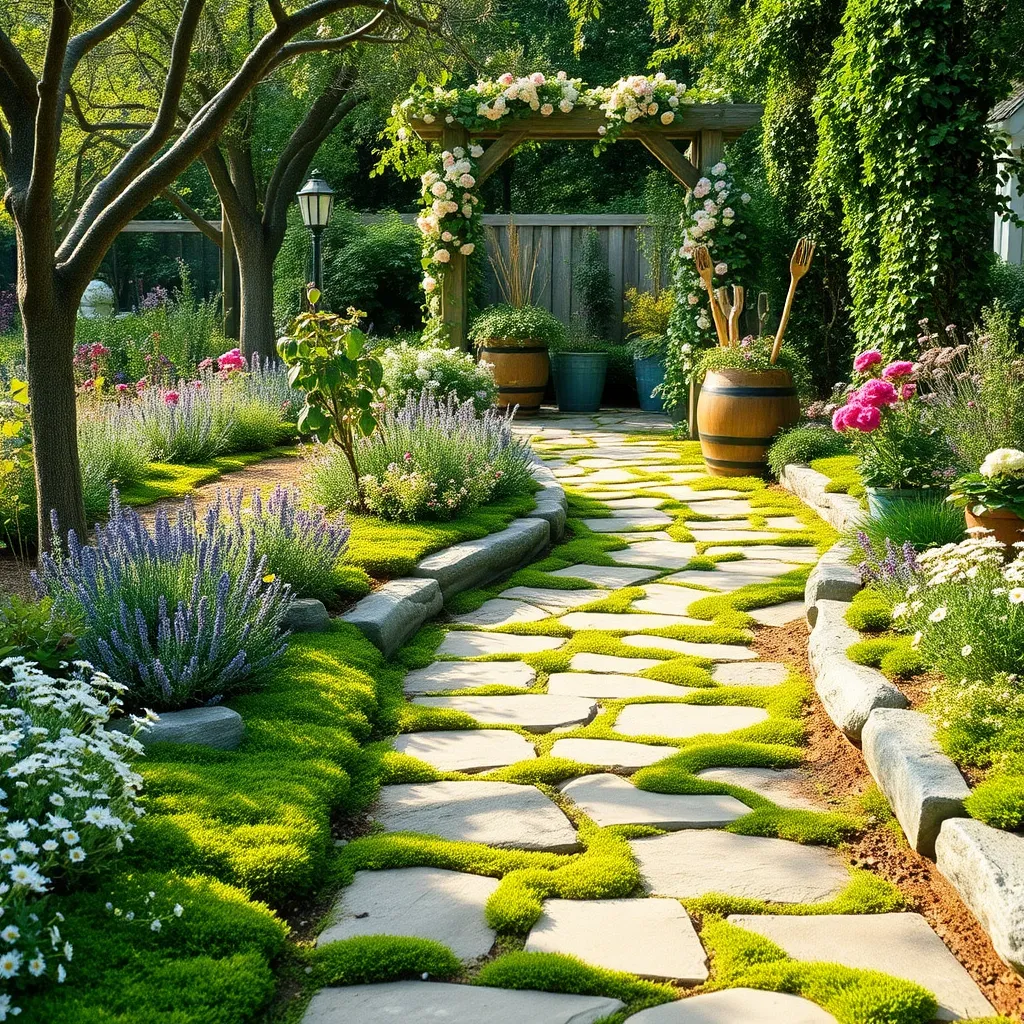
To maximize space in a small garden, consider a winding stone pathway. This design not only adds visual interest but also creates the illusion of a larger area. Use compact, low-maintenance plants like thyme or creeping Jenny along the path’s edges. These plants can thrive in partial shade and require minimal watering once established, making them ideal companions for a small pathway.
Another effective approach is to use gravel pathways, which are both affordable and easy to install. Choose a gravel type that complements your garden’s aesthetic, and remember to lay down a weed barrier fabric underneath. This simple step prevents unwanted plant growth, reducing long-term maintenance. Add stepping stones at intervals to provide stable footing and enhance the path’s visual appeal.
For a more natural look, consider a mulch pathway. Mulch is not only cost-effective but also helps retain soil moisture and suppresses weeds. Refresh the mulch layer yearly to maintain its appearance and functionality. A mulch path pairs beautifully with native plants that require little water and care once established. Native plants are also beneficial for local wildlife, attracting pollinators to your garden.
Integrating vertical elements along your pathway can maximize the use of space. Use trellises or arches with climbing plants like clematis or sweet peas to add height and interest. These plants require support as they grow, and regular pruning will encourage healthy blooms. Vertical gardening is a smart way to add greenery without sacrificing valuable ground space in a small garden.
Maintenance Tips for Long-Lasting Paths
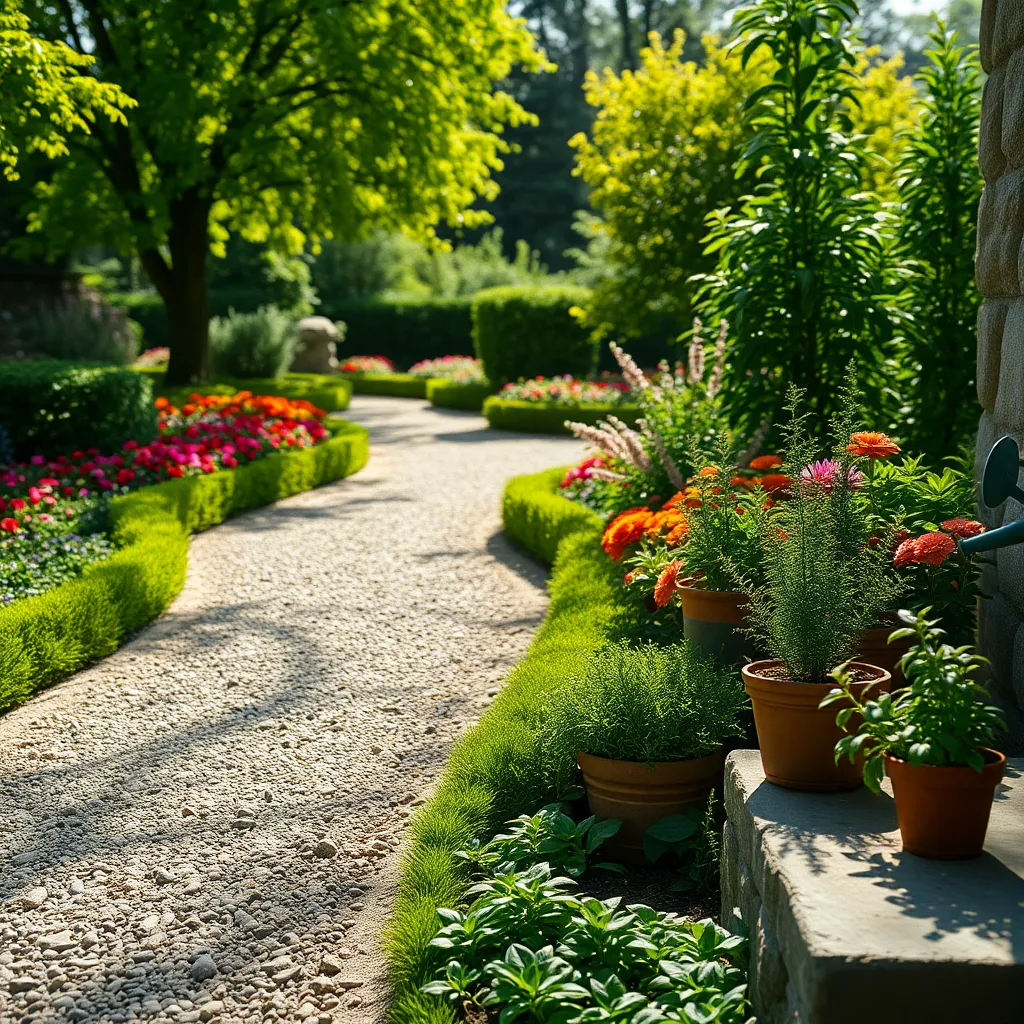
Maintaining your garden paths is essential for ensuring they remain safe and visually appealing over time. Regularly sweeping paths to remove debris and fallen leaves will prevent the growth of slippery moss and algae, which can be hazardous.
Checking for any loose stones or bricks is crucial to maintaining a stable surface. Repair any uneven areas promptly to prevent trips and ensure the path remains sound and secure.
Consider applying a sealant to stone or concrete paths to protect them from the elements. Sealants help to repel water and reduce the formation of cracks, which can extend the lifespan of your pathways significantly.
For paths composed of organic materials like wood chips or bark, replenishing the top layer annually helps maintain an even surface. This simple act not only enhances the path’s appearance but also improves its functionality by providing better drainage.
Conclusion: Growing Success with These Plants
In this exploration of ’10 Productive Garden Pathway Designs,’ we’ve delved into essential relationship concepts that mirror the beauty and structure of a well-planned garden. From creating strong foundations and fostering open communication to nurturing growth and embracing change, each design offers a unique blueprint for cultivating a thriving partnership. We’ve seen how setting boundaries, practicing empathy, and celebrating milestones can enhance the journey, while maintaining balance and resilience ensures longevity.
Now, it’s time to take these insights and apply them to your own relationship. Start by selecting one concept that resonates most with your current situation, and make a commitment to act on it today. Whether it’s initiating a heartfelt conversation or planning a shared activity, small steps can lead to remarkable transformations.
As you embark on this journey, I encourage you to bookmark this article for future reference. It can serve as a valuable resource, guiding you through different phases of your relationship. Remember, the path to a flourishing partnership is ever-evolving, and with intentional effort, success is within reach. Together, let’s cultivate relationships that are as enduring and beautiful as a well-tended garden.

